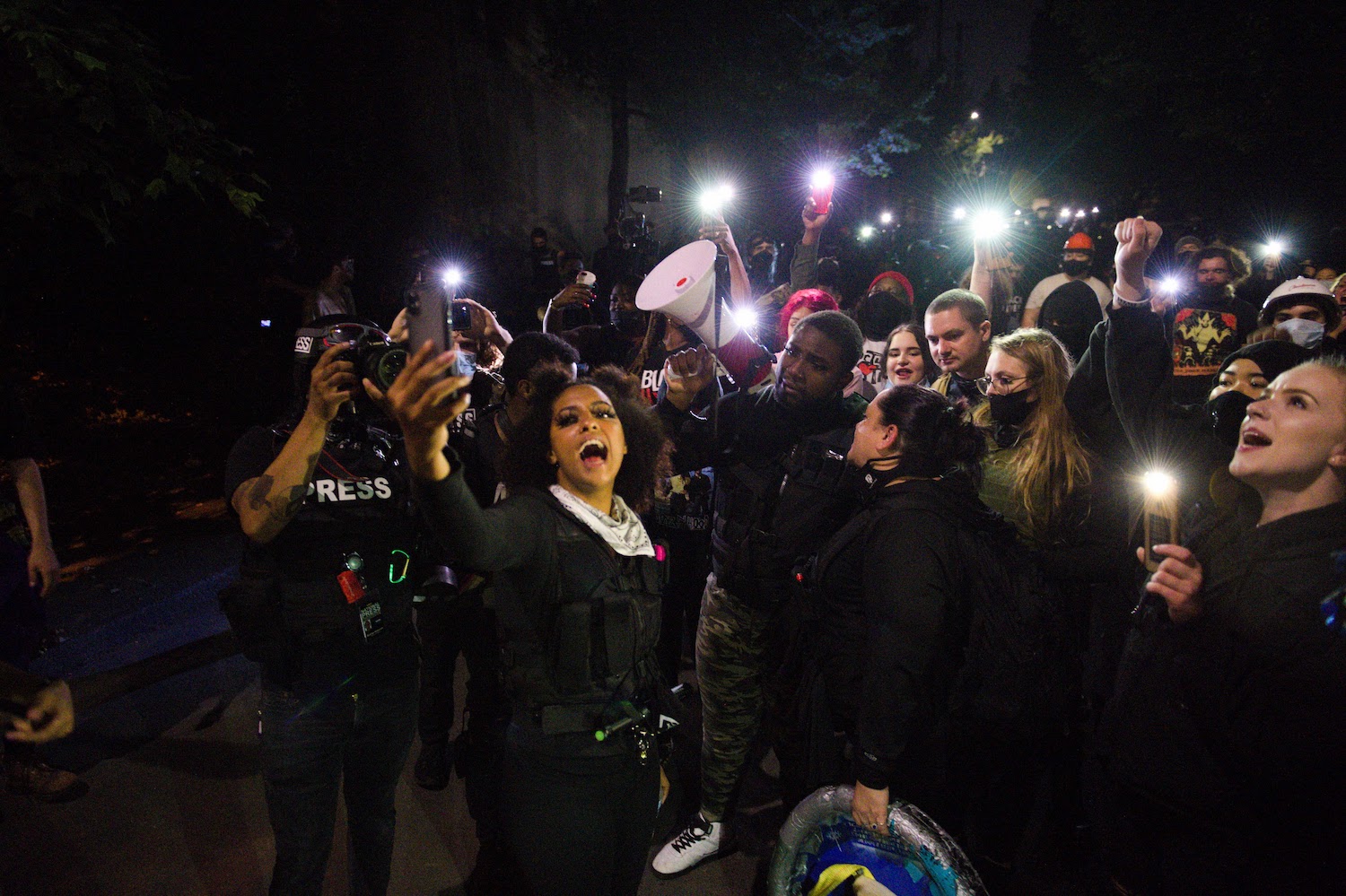University District Coalition mulls over plans
The steering committee for the University District Coalition has some new feedback after the first public presentation of its visionary plan last week.
The committee, funded by Portland State University, set up exhibits in the Native American Student Community center last week and invited all comers to ask questions about proposed developments in the district, to examine maps and read blown-up copies of the coalition’s draft vision statement.
Ringmaster for the event was Burt Ewart, PSU manager of campus design and planning, who chairs the steering committee. The coalition is comprised of representatives from three distinct neighborhoods, Corbett-Terwilliger-Lair Hill (CTLH), South Auditorium and the University District.
��
The purpose of the coalition is to guide the orderly integration of university functions with the surrounding neighborhoods and to find a balance between the neighborhoods and the university that will enhance the positive aspects of each area while maintaining the scale and character of each neighborhood.
Ewart said this week, “The open house went very nicely. I was very pleased with the turnout and the reaction we got from everybody.” He said about 80 people signed the register and he estimated that many more attended but didn’t sign in.
The coalition posted a large blank paper on the wall of the reception room for comments and Ewart said there were many written suggestions.
The focus group’s area of concern straddles the I-405 freeway. It is generally bounded by S.W. Market St. on the north, S.W. Gibbs St. on the south, the South Park Blocks and other park and green spaces on the west and the I-5 freeway on the east.
Ewart said his group encountered some skepticism about the vision statement. It looks for extensive redevelopment and improved connectivity in the neighborhoods, without sacrificing the amenities that make the neighborhoods distinctive areas to live and work in.
“Some people didn’t quite believe us,” Ewart said, when they examined the vision statement. “I think there’s a general tendency not to trust what big institutions like Portland State are doing.”
That type of doubt was echoed by two attendees who read the vision statement and said, “What goes around comes around.” Both said they no longer lived in the area but grew up there and saw amenities like schools disappear with development.
“It all started to come apart when they destroyed Harbor drive,” one of the women said. Harbor drive was a freeway that ran close to the waterfront and connected downtown with what was then known as Old South Portland.
Ewart recalled hearing of a 95-year-old woman who complained that nothing ever happened after she had gone to planning meeting after planning meeting. He said the steering committee will be examining all public input.
“We’ll go back for more ideas, more questions,” he said. “I’m just the facilitator. I’m just here to get people talking.”
Bill Danneman, a board member of CTLH, fielded questions for the attendees of the open house.
“I think it’s been an open process,” he said. “I think the university wants to work with its neighbors. We want to keep it an open process. We want to get input from all residents and property owners.”
Danneman said when the city government began talking about development in the south waterfront area, “We felt like nobody was listening to us. We love our neighborhoods. We are very protective of our neighborhoods. We know development is inevitable.” But he favors development which considers “what we would like to see happen.”
Ken Brown, PSU Bookstore manager, was there with fliers to hand out. He said many residents of South Auditorium and CTLH didn’t realize the bookstore is open to them.
“There’s a lot of discussion about what’s desirable in these neighborhoods,” Brown said. An open house like this one, he said, “helps us plan for serving the community beyond the students and faculty.”
Brown said he does not live in the affected neighborhoods but he cycles through them every day and has a strong interest in what’s going on.
“A lot could be done to change things, to make it more accessible and vibrant a district,” he concluded.
Another interested attendee was Colin Dunkeld, a retired professor from the PSU School of Education. He expressed great interest in proposed development, particularly as it relates to the university.
“It’s a thrill to come onto the campus now and see how it’s developing,” he said.
The vision statement lists a number of neighborhood amenities that would be desirable. One of these is a grocery store that is affordable and accessible. It would be smaller it size, about 50,000 square feet, rather than regional in scale. The committee doesn’t want to see it become a destination.
Also seen as desirable are a full-service pharmacy, more restaurants and other night-life amenities and a hardware store. Local ownership of businesses would be encouraged.
Ewart conceded that the vision statement and its implementation are still in the formative stages and hinted he believed that some people might this kind of change unsettling.
He recalled one of his favorite quotes from George Bernard Shaw: “The reasonable man adapts himself to the world. The unreasonable man persists in trying to adapt the world to himself. Therefore, all progress depends on the unreasonable man.”
The coalition steering committee will schedule other similar open house programs in the future.



